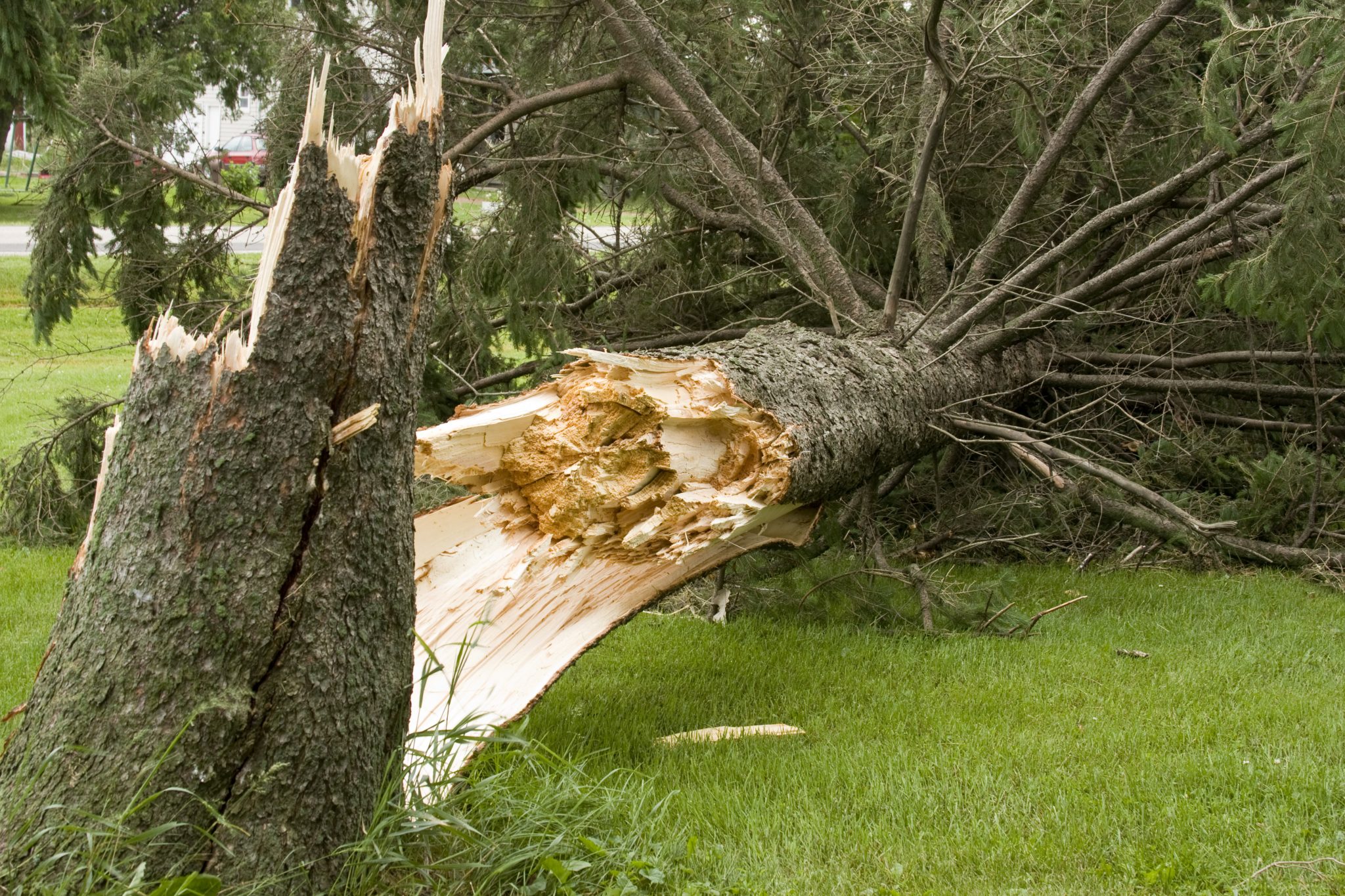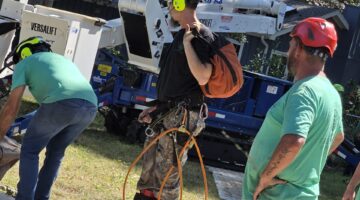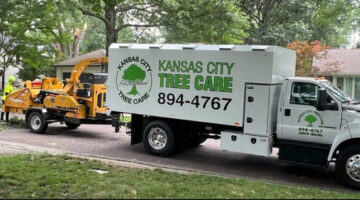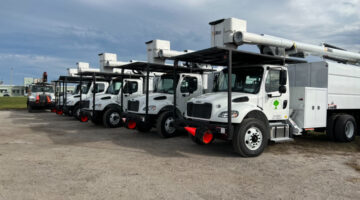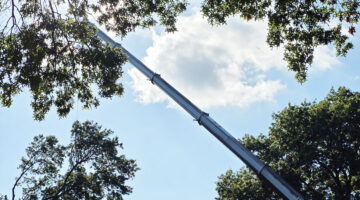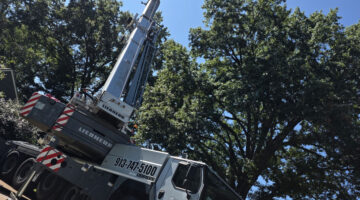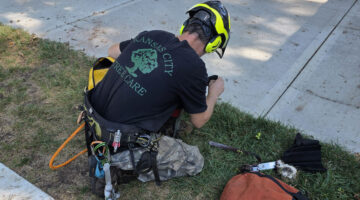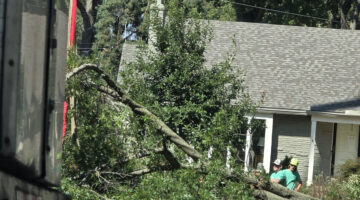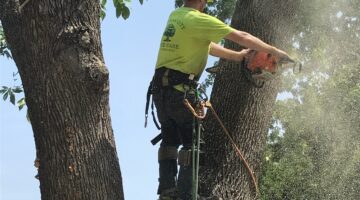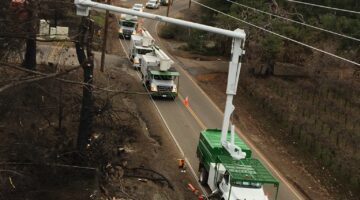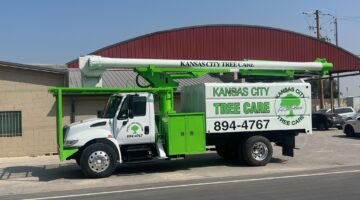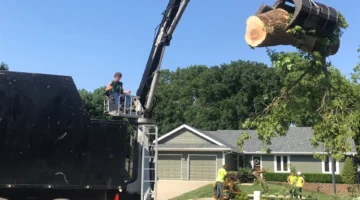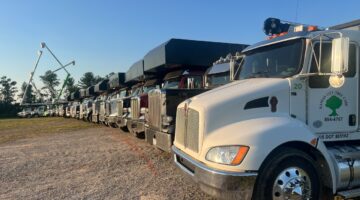The Essential Steps for Safe and Efficient Tree Removal: Tips from Kansas City's Leading Experts
When it comes to maintaining the health and safety of your property, understanding the essential steps for safe and efficient tree removal is crucial. Trees add beauty and value to your home, but there are times when storm damage, disease, or structural issues necessitate their removal. At Kansas City Tree Care, our focus is on providing expert advice and services that prioritize tree preservation whenever possible. However, when removal becomes the only viable option, our team of seasoned professionals is ready to deliver reliable Kansas City tree services tailored to your needs. In this guide, you'll discover how our professional tree removal process ensures the safety of your home and the wellbeing of your landscape.
Understanding Tree Removal Necessities
Before diving into the tree removal process, it's crucial to understand when and why tree removal becomes necessary. This section explores the key factors that determine whether a tree should be removed, including its health, safety implications, and impact on surrounding property.
Recognizing When Removal Is Essential
Tree removal should always be a last resort, but certain situations make it unavoidable. Recognizing these scenarios is crucial for maintaining a safe and healthy landscape.
Dead or dying trees pose significant risks and often require removal. Signs of a dying tree include extensive dead branches, leaf discoloration, and bark falling off in large pieces.
Severely damaged trees, whether from storms or other causes, may not recover and could become hazardous. If more than 50% of the tree is damaged, removal is often the safest option.
Disease or pest infestations that have progressed beyond treatment may necessitate removal to prevent spread to other trees. Consult with a certified arborist to determine if the issue is treatable or if removal is necessary.
Evaluating Tree Health and Safety
Assessing a tree's health and safety is a critical step in determining whether removal is necessary. This evaluation requires a keen eye and professional expertise.
Look for signs of structural instability such as leaning, cracks in the trunk, or exposed roots. These issues can indicate that the tree is at risk of falling, potentially causing damage or injury.
Fungal growth on the trunk or branches often signals internal decay. While some fungi are harmless, others can compromise the tree's structural integrity.
Consider the tree's proximity to structures, power lines, or high-traffic areas. Even a healthy tree may need removal if it poses a significant risk due to its location.
Assessing the Impact on Property
Trees can significantly affect your property, both positively and negatively. Understanding this impact is crucial when considering removal.
Large trees near foundations can cause damage through root growth. If roots are encroaching on your home's foundation or underground utilities, removal might be necessary.
Overgrown trees can block sunlight, affecting your home's energy efficiency and the growth of other plants. Consider whether pruning could solve the issue before opting for removal.
Some trees produce excessive debris, such as leaves, fruits, or sap, which can be a nuisance. While this alone isn't usually grounds for removal, it's a factor to consider in conjunction with other issues.
Preparing for Safe Tree Removal
Proper preparation is key to ensuring a safe and efficient tree removal process. This section outlines the essential steps to take before the actual removal begins, including site assessment, obtaining necessary permits, and selecting the right professional service.
Initial Site Assessment and Planning
A thorough site assessment is the foundation of any successful tree removal operation. This crucial step ensures safety and efficiency throughout the process.
Begin by examining the tree's surroundings. Identify potential obstacles such as buildings, power lines, or other vegetation that could complicate the removal process.
Assess the tree's lean and structure to determine the safest felling direction. This analysis helps prevent damage to property and ensures the safety of workers and bystanders.
Consider access points for equipment and plan the removal strategy accordingly. This may involve clearing paths or coordinating with neighbors for temporary access.
Securing the Necessary Permits
Obtaining the proper permits is a critical step in the tree removal process, ensuring compliance with local regulations and avoiding potential legal issues.
Contact your local municipality or homeowners' association to inquire about permit requirements. Some areas have strict regulations, especially for trees of a certain size or species.
Be prepared to provide details about the tree, including its location, size, and the reason for removal. Some jurisdictions may require an arborist's assessment before granting a permit.
Factor in the time required for permit approval when planning your tree removal. This process can take anywhere from a few days to several weeks, depending on your location.
Hiring Professional Tree Removal Services
Selecting the right professional for tree removal is crucial for ensuring safety, efficiency, and quality results. Here's what to consider when choosing a tree service provider.
Look for certified arborists or companies with memberships in professional organizations like the International Society of Arboriculture (ISA). These credentials indicate a commitment to industry standards and ongoing education.
Check for proper insurance coverage, including liability and workers' compensation. This protects you from potential liability in case of accidents or property damage during the removal process.
Request and compare quotes from multiple providers. While cost is important, prioritize experience, reputation, and safety practices when making your decision.
The Tree Removal Process Explained
Understanding the tree removal process helps homeowners know what to expect and ensures a smooth operation. This section breaks down the steps involved in professional tree removal, including emergency services and post-removal clean-up.
Step-by-Step Removal Procedures
Professional tree removal follows a systematic approach to ensure safety and efficiency. Here's an overview of the typical process:
-
Site preparation: The area around the tree is cleared and safety zones are established.
-
Trimming: Larger branches are removed to make the main trunk more manageable.
-
Felling or sectional dismantling: Depending on the tree's location, it may be felled in one piece or cut down in sections.
-
Limbing and bucking: The felled tree is stripped of remaining branches and the trunk is cut into manageable pieces.
-
Stump removal: The stump is either ground down or completely removed, depending on client preference.
Throughout this process, professional tree removal services use specialized equipment and techniques to ensure safety and minimize property damage.
Handling Emergency Tree Services
Emergency tree services are crucial when dealing with storm damage or sudden tree failures that pose immediate risks. These situations require rapid response and specialized skills.
Emergency tree removal often involves working in challenging conditions, such as during or immediately after storms. Professionals are trained to assess and mitigate risks quickly in these scenarios.
The process may include clearing fallen trees from structures or roads, removing hanging or split branches, and addressing trees that are at imminent risk of falling.
Prioritization is key in emergency situations. Tree care professionals will focus on immediate hazards first, then move on to less urgent issues as time and conditions allow.
Ensuring Post-Removal Clean-Up
A thorough clean-up is an essential part of the tree removal process, leaving your property tidy and safe.
The clean-up typically includes removing all debris, including branches, leaves, and wood chips. Many services offer wood chipping on-site, which can provide mulch for your garden.
Stump grinding residue is usually raked and leveled, ready for new grass seed or landscaping. Some companies may offer to haul away the grindings or spread them as mulch.
Final site inspection ensures no hazards remain, such as protruding roots or hidden debris. This step is crucial for your safety and satisfaction with the service.
Prioritizing Tree Preservation
While tree removal is sometimes necessary, preservation should always be the first consideration. This section explores alternatives to removal, effective care techniques, and the importance of proactive maintenance in keeping trees healthy and safe.
Alternatives to Tree Removal
Before opting for removal, consider these alternatives that can often save a tree while addressing safety or aesthetic concerns:
-
Pruning: Strategic removal of dead, diseased, or problematic branches can often resolve issues without removing the entire tree.
-
Cabling and Bracing: These techniques can provide support for weak branches or split trunks, extending the life of the tree.
-
Root Pruning: When roots are causing issues with foundations or pavements, selective pruning can sometimes solve the problem without full tree removal.
-
Treating Diseases or Pests: Many tree health issues can be effectively managed with proper diagnosis and treatment.
Always consult with a certified arborist to determine the best course of action for your specific situation.
Implementing Effective Tree Care Techniques
Proper tree care is essential for maintaining healthy, beautiful trees that enhance your property. Here are some key techniques:
Regular pruning helps maintain tree shape, removes dead or diseased branches, and promotes healthy growth. The frequency and extent of pruning depend on the tree species and its location.
Proper watering is crucial, especially for young trees or during dry periods. Deep, infrequent watering encourages strong root growth and drought resistance.
Mulching around the base of trees helps retain moisture, regulate soil temperature, and prevent weed growth. Be sure to keep mulch away from the trunk to prevent rot.
Encouraging Proactive Tree Maintenance
Proactive maintenance is key to preventing issues that could lead to tree removal. Here's how to stay ahead of potential problems:
Schedule regular inspections with a certified arborist. These professionals can spot early signs of disease, pest infestations, or structural issues before they become severe.
Keep an eye on your trees throughout the year. Look for changes in leaf color, branch dieback, or unusual growth patterns that might indicate health issues.
Protect trees from potential damage during construction or landscaping projects. Establish protection zones and avoid compacting soil around tree roots.
Choosing the Right Kansas City Tree Services
Selecting the right tree service provider is crucial for ensuring the health of your trees and the safety of your property. This section guides you through evaluating service providers, understanding agreements, and contacting experts in the Kansas City area.
Evaluating Service Provider Expertise
When choosing a tree service, look for providers with a proven track record of expertise and professionalism. Here's what to consider:
Check for proper certifications, such as ISA (International Society of Arboriculture) certification. This indicates a commitment to professional standards and ongoing education.
Look for companies with extensive experience in the Kansas City area. Local knowledge of tree species and climate conditions is invaluable.
Read reviews and ask for references. Past customer experiences can provide insight into the quality of service you can expect.
Understanding Service Agreements and Warranties
Clear communication and understanding of service terms are essential for a smooth tree care experience. Pay attention to these aspects:
Ensure all services, costs, and timelines are clearly outlined in a written agreement. This helps prevent misunderstandings and disputes.
Ask about warranties or guarantees on work performed. Reputable companies often stand behind their services with some form of assurance.
Understand the company's policy on unexpected issues or additional work that may arise during the service. Clear communication about potential changes can prevent surprises.
Contacting Kansas City Tree Care Experts
When you're ready to seek professional tree care services in Kansas City, here's how to proceed:
-
Research local providers and create a shortlist of potential companies.
-
Contact each company for an initial consultation or estimate.
-
Prepare questions about their services, experience, and approach to tree care.
-
Schedule on-site assessments with your top choices to get accurate quotes and recommendations.
Remember, choosing the right tree care service is an investment in the health and beauty of your landscape. Take the time to find a provider that aligns with your needs and values.

Tree Care Advocacy
Tree Care Services
Kansas City Tree Removal Service

